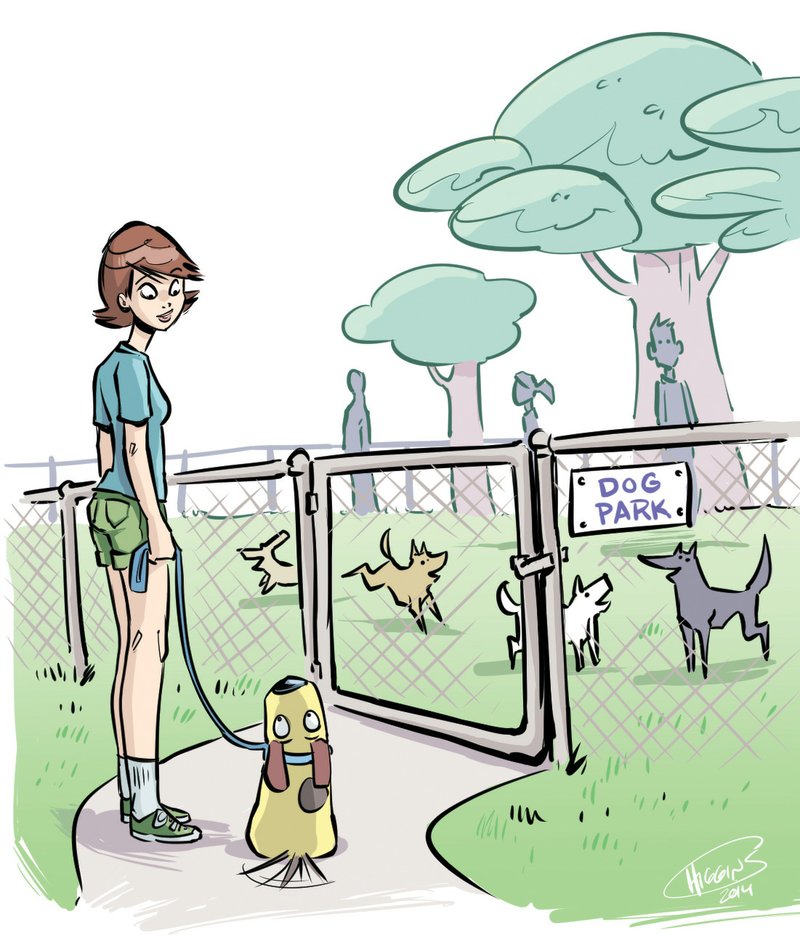I'd like to take my dog, Sherlock, to the dog park because he's alone during the day when I'm working. I walk him almost every day but he has a lot of energy (he's a mixed breed with some terrier in him) and I don't think that's enough. Maybe playing with other dogs would be good for him. We've walked outside the dog park at Burns Park [North Little Rock] and haven't gone inside yet but Sherlock looks pretty interested. How can I make sure he has a good time?
A positive dog park experience primarily depends upon an owner's willingness to pay close attention to his dog's behavior and monitor how the dog interacts with other dogs in the park, says professional dog trainer Karen Kelley of North Little Rock.
Most of the issues that arise at a dog park can be attributed to dog owners' lack of attentiveness, Kelley says. "When you take your dog to the park, you have to watch your dog and everyone else's. You have to be ready to step in and correct your dog if he's getting too pushy. You can't turn your dog loose, then just sit and read."
Every park has a set of rules. Most include that a dog be at least 4 months old, spayed or neutered and current on vaccinations. There's typically a prohibition against dogs with known aggressive behavioral tendencies.
Kelley, who helps owners rehabilitate dogs with behavioral problems, says owners need to stand outside the dog park fence and check out the other dogs and people in the park before taking a dog inside and turning it loose. If it appears that one dog is being targeted by the others or that a dog is antagonizing others, then it would be better to turn away and take the dog for a walk. Do likewise if the owners aren't paying attention to what's going on.
If all seems rosy inside the park, it's still helpful to go for a walk before entering, she says. "Your dog is going to be excited to be there, probably even overexcited -- that can get them into trouble. And if your dog is naturally excitable, then he'll be super excited." Walking the dog beforehand calms him and takes the edge off.
A few other issues to consider at the dog park, according to Kelley and the Association of Pet Dog Trainers:
• Don't use toys or treats in the dog park.
• If your dog doesn't seem comfortable, don't force him to stay. Take him someplace he enjoys.
• Don't allow your dog to bully another. Also be willing to remove your dog if he's the bully.
• Only take your dog into the park designated for his size. Burns Park's dog park, for example, has separate fenced areas for small, medium and large dogs. Even if you have a small dog and a large dog, they each need to be in the areas for their size, Kelley says. Of course, then it's hard to keep an eye on both dogs, so she suggests taking a friend or family member to help.
• If there are intact (unneutered) male dogs in the park, leave and return another time.
• Occasionally fights break out among dogs. If that happens, don't jump in and try to stop it, Kelley says. "You'll get bitten or you could fall and become a target." Take an air-horn to the park and blow it if things get out of hand. The noise should get the dogs' attention. Another tactic is to throw a blanket over the fighting dogs.
• Dogs should be off-leash in a dog park. After all, the point is to let them run, play and work off energy. Also, Kelley says, a leashed dog can be a target for other dogs. The exception is if an owner doesn't have verbal control of his dog. In that case, the dog shouldn't be off leash in the park or anywhere else. An owner should be able to get his dog's attention simply by calling his name.
"If you can't control your dog at the park," Kelley says, "then you haven't taught him anything but that he can make his own rules."
Family on 07/09/2014
